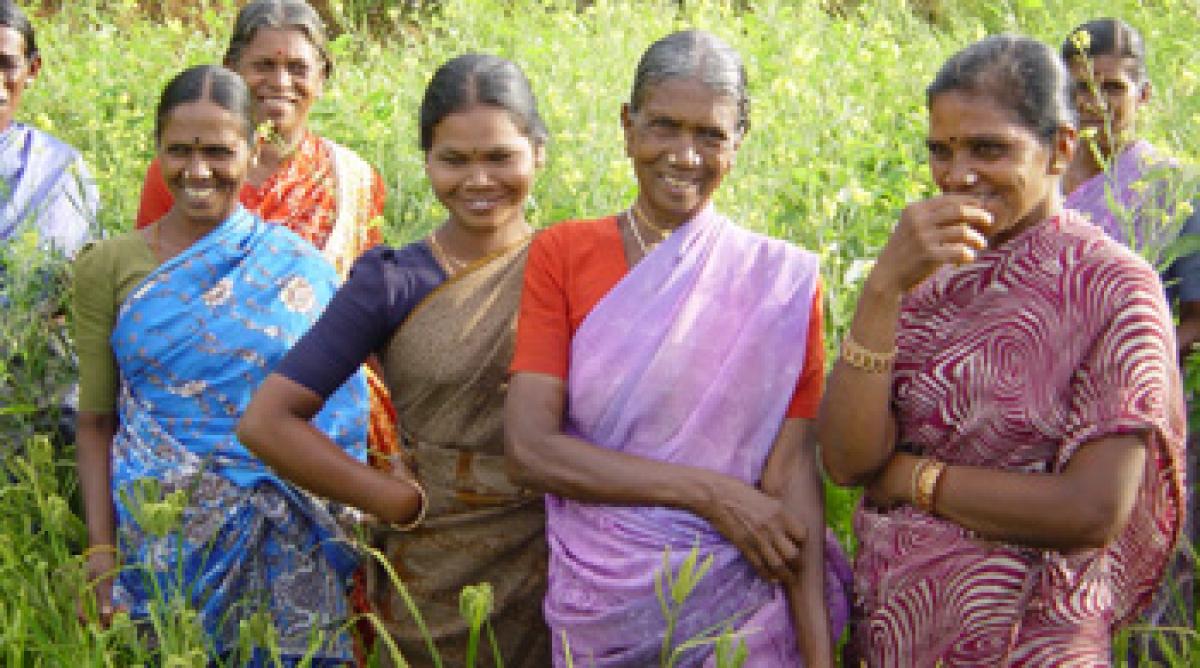Live
- Educational Trips in South Kanara Put on Hold Following Murudeshwar Drowning Incident
- Karnataka Temple Embraces Mechanical Elephant for Cruelty-Free Ceremonies
- Temple modelled after Ram Mandir to be constructed in US
- Property dealer shot dead in broad daylight in Ranchi
- Maharashtra: CM Fadnavis expands Cabinet; inducts 39 ministers
- Winter Session of UP Assembly from Dec 16; CM seeks cooperation of all parties
- AIADMK executive council meet passes sixteen resolutions, vows to make Edappadi CM again
- Manchu Family Feud Resurfaces in Jalpally
- Kerala Hindu leader gifts Rig Veda to Pope Francis
- 35 miners trapped under rubble in Afghanistan
Just In

The Modi government has launched many new schemes for the poor and marginalized with ambitious goals. However, as past experience shows, most of these suffer from the same flaws: Absence of active involvement of primary stakeholders in their designing and implementation.
True, there are critics who believe the poor are so poor that they should not be made to pay for things. But experience shows that dignity is more important than anything else. Also, as they already pay for basic things, we need to find a way to provide them things they cannot afford but need
The Modi government has launched many new schemes for the poor and marginalized with ambitious goals. However, as past experience shows, most of these suffer from the same flaws: Absence of active involvement of primary stakeholders in their designing and implementation.
Consequently, this is one of the main reason why they are not yielding results. Remember, over the last 70 years of planning, most development programmes for the poor have been designed on the premise that the needy need charities as they cannot afford to pay for services. But this is an erroneous assumption wherein dollops of free money have stifled people’s initiatives.
Indeed, several studies have revealed that the poor are keen to have access to proper health facilities, education, sanitation and housing. Moreover, they are willing to pay for the services if they are genuinely useful and are available through hassle free systems.
Today the marginalised are investing their precious savings in private hospitals and private schools. They are also borrowing at heavy interest rates from private lenders because bank loans, despite being cheaper, are mired in red tape.
Besides, they are fed up with the bureaucratic procedures that consume their time and do not yield any benefits. In fact the loss of several days’ wages in chasing Government departments for largesse under official schemes neutralises the net benefits.
True, there are critics who believe the poor are so poor that they should not be made to pay for things. But experience shows that dignity is more important than anything else.
Also, as they already pay for basic things, we need to find a way to provide them things they cannot afford but need. Further, the poor insist that the government schemes should be tailored to meet their actual needs. This ethos underpins the new development paradigm.
The mantra: “Tell us what the poor want, don’t tell us what you think is good for them.” This is arrogant attitude spelling ‘we are going to come and fix something for you and one should appreciate it.
Forgetting, the only way to really build trust is by starting from how the people really are. Undeniably, the reality of those living on the margin of existence is often different from the assumptions made by the Government.
Thus, it is difficult for the planners to understand their fears, hesitancy, pain and duress they live in which separates the project from its implementation. Of what is possible and impossible and easy or difficult for the rural poor.
Notably, rural poverty is misperceived because of the ‘distance’ of the administrator and the professional from the poor. As the great anthropologist and development expert Robert Chambers’s points, the rich, powerful and urban professionals form the core and the poor and weak are at the peripheries leading to a systematic bias in terms of rural poverty.
Importantly, a new phenomenon has debt: rural tourism, of visits to roadsides and tarmac visits but only meeting influential people and asking them predetermined questions etc. They come in car convoys with hundreds of hangers-on.
Resulting in the aid structure only involving top-down decisions, incredible bureaucratic attitude and paperwork. Add to this expensive American expatriates who drive around in SUV’s.
Clearly, it is much better to support local groups rather than the expats, who not only cost less but have a better idea of what people need. Unless the poor and disadvantaged are deliberately and persistently sought, they will remain in the background, effectively screened from outside inquiries.
The “bottom up” approach is about living and working with the poor, listening to them to gain their confidence and trust. It cannot be bought and manipulated with money or by grafting urban assumptions of development which might destroy the existing workable low cost structures.
Additionally, it is about respecting and implementing the ideas of the poor, encouraging them to use their skills and knowledge for their own development.
Significantly, it is about taking a back seat and providing the space for them to develop themselves. In sum, empowerment means different things to different people. There is, of course, one tide which will lift all boats.
This is the tide of economic growth and poverty is the biggest hurdle to empowerment as it denies access to education; fails to create adequate number of job opportunities; drives families to a demeaning life shorn of the barest dignity; forces a mother to give away her girl child in marriage. We need to correct this.

© 2024 Hyderabad Media House Limited/The Hans India. All rights reserved. Powered by hocalwire.com







